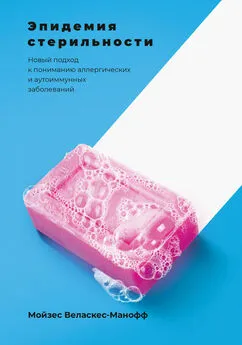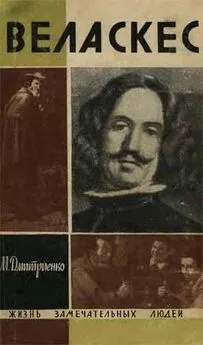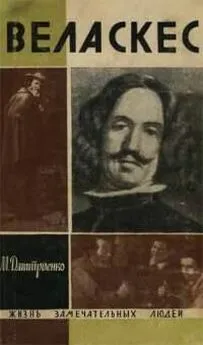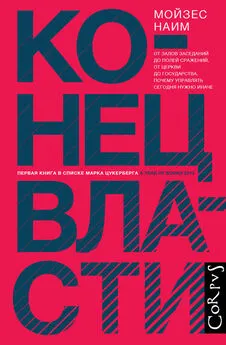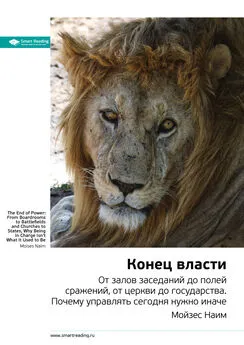Мойзес Веласкес-Манофф - Эпидемия стерильности
- Название:Эпидемия стерильности
- Автор:
- Жанр:
- Издательство:Манн, Иванов и Фербер
- Год:2019
- Город:Москва
- ISBN:978-5-00117-706-7
- Рейтинг:
- Избранное:Добавить в избранное
-
Отзывы:
-
Ваша оценка:
Мойзес Веласкес-Манофф - Эпидемия стерильности краткое содержание
Эпидемия стерильности - читать онлайн бесплатно ознакомительный отрывок
Интервал:
Закладка:
398
L. F. McCaig, J. M. Hughes. “Trends in Antimicrobial Drug Prescribing Among Office-based Physicians in the United States”. JAMA 273, № 3 (1995).
399
Mike Sharland и SACAR Paediatric Subgroup. “The Use of Antibacterials in Children: A Report of the Specialist Advisory Committee on Antimicrobial Resistance (SACAR) Pediatric Subgroup”. Journal of Antimicrobial Chemotherapy 60, Suppl. 1 (2007).
400
Margaret Mellon, Charles Benbrook, Karen Lutz Benbrook. “Hogging It: Estimates of Antimicrobial Abuse in Livestock”. Cambridge: Union of Concerned Scientists, January 2001.
401
Gill H. Harden. FSIS National Residue Program for Cattle Audit Report 24601-08-KC March 2010”. Washington: USDA Office of Inspector General, 2010.
402
Joanne C. Chee-Sanford et al. “Fate and Transport of Antibiotic Residues and Antibiotic Resistance Genes Following Land Application of Manure Waste”. Journal of Environmental Quality 38, № 3 (2009).
403
Alistair B. A. Boxall et al. “Uptake of Veterinary Medicines from Soils into Plants”. Journal of Agricultural and Food Chemistry 54, № 6 (2006).
404
Tammy L. Jones-Lepp et al. “Method Development and Application to Determine Potential Plant Uptake of Antibiotics and Other Drugs in Irrigated Crop Production Systems”. Journal of Agricultural and Food Chemistry 58, № 22 (2010).
405
Chad A. Kinney et al. “Survey of Organic Wastewater Contaminants in Biosolids Destined for Land Application”. Environmental Science & Technology 40, № 23 (2006).
406
Chenxi Wu et al. “Uptake of Pharmaceutical and Personal Care Products by Soybean Plants from Soils Applied with Biosolids and Irrigated with Contaminated Water”. Environmental Science & Technology 44, № 16 (2010).
407
Gretchen M. Bruce, Richard C. Pleus, Shane A. Snyder. “Toxicological Relevance of Pharmaceuticals in Drinking Water”. Environmental Science & Technology 44, № 14 (2010); Mark J. Benotti et al. “Pharmaceuticals and Endocrine Disrupting Compounds in U.S. Drinking Water”. Environmental Science & Technology 43, № 3 (2009).
408
Более подробную информацию о триклозане см.: H. Singer et al. “Triclosan: Occurrence and Fate of a Widely Used Biocide in the Aquatic Environment: Field Measurements in Wastewater Treatment Plants, Surface Waters, and Lake Sediments”. Environmental Science & Technology 36, № 23 (2002); K. McClellan, R. U. Halden. “Pharmaceuticals and Personal Care Products in Archived U.S. Biosolids from the 2001 EPA National Sewage Sludge Survey”. Water Research 44, № 2 (2010).
409
Jason K. Blackburn et al. “Evidence of Antibiotic Resistance in Free-Swimming, Top-Level Marine Predatory Fishes”. Journal of Zoo and Wildlife Medicine 41, № 1 (2010).
410
Shannon L. Russell et al. “Early Life Antibiotic-Driven Changes in Microbiota Enhance Susceptibility to Allergic Asthma”. EMBO Reports (2012).
411
Carlotta De Filippo et al. “Impact of Diet in Shaping Gut Microbiota Revealed by a Comparative Study in Children from Europe and Rural Africa”. Proceedings of the National Academy of Sciences 107, № 33 (August 17, 2010).
412
Yatsunenko, Tanya, et al. “Human Gut Microbiome Viewed Across Age and Geography”. Nature (May 3, 2012).
413
Justin L. Sonnenburg. “Microbiology: Genetic Pot Luck”. Nature 464, № 7290 (2010).
414
D. Raoult. “The Globalization of Intestinal Microbiota”. European Journal of Clinical Microbiology & Infectious Diseases 29, № 9 (2010).
415
Более подробную информацию о западном питании см.: Loren Cordain et al. “Origins and Evolution of the Western Diet: Health Implications for the 21st Century”. American Journal of Clinical Nutrition 81, № 2 (2005).
416
То есть калорийной пищей с низкой биологической ценностью и высоким содержанием жиров и сахара . Прим. пер.
417
Reiner Jumpertz et al. “Energy-balance Studies Reveal Associations Between Gut Microbes, Caloric Load, and Nutrient Absorption in Humans”. American Journal of Clinical Nutrition 94, № 1 (2011).
418
Patrice D. Cani, Nathalie M. Delzenne. “The Gut Microbiome as Therapeutic Target”. Pharmacology & Therapeutics 130, № 2 (2011).
419
Husam Ghanim et al. “Orange Juice Neutralizes the Proinflammatory Effect of a High-Fat, High-Carbohydrate Meal and Prevents Endotoxin Increase and Toll-like Receptor Expression”. American Journal of Clinical Nutrition 91, № 4 (2010).
420
Wendy S. Garrett, Jeffrey I. Gordon, Laurie H. Glimcher. “Homeostasis and Inflammation in the Intestine” Cell 140, № 6 (2010); Wendy S. Garrett et al. “Communicable Ulcerative Colitis Induced by T-bet Deficiency in the Innate Immune System”. Cell 131, № 1 (2007).
421
Matam Vijay-Kumar et al. “Metabolic Syndrome and Altered Gut Microbiota in Mice Lacking Toll-like Receptor 5”. Science 328, № 6975 (2010).
422
D. N. Frank et al. “Disease Phenotype and Genotype Are Associated with Shifts in Intestinal-associated Microbiota in Inflammatory Bowel Diseases”. Inflammatory Bowel Disease 17, № 1 (2011).
423
Ester Sanchez et al. “Influence of Environmental and Genetic Factors Linked to Celiac Disease Risk on Infant Gut Colonization by Bacteroides Species”. Applied and Environmental Microbiology 77, № 15 (2011).
424
Seth T. Walk et al. “Alteration of the Murine Gut Microbiota during Infection with the Parasitic Helminth Heligmosomoides polygyrus”. Inflammatory Bowel Diseases 16, № 11 (2010).
425
Carl Zimmer. “How Microbes Defend and Define Us”. The New York Times, July 12, 2010.
426
Alexander Khoruts, Johan Dicksved, Janet K. Jansson. “Changes in the Composition of the Human Fecal Microbiome after Bacteriotherapy for Recurrent Clostridium difficile-associated Diarrhea”. Journal of Clinical Gastroenterology 44, № 5 (2010).
427
J. A. Karas, D. A. Enoch, S. H. Aliyu. “A Review of Mortality Due to Clostridium difficile Infection”. Journal of Infection 61, № 1 (2010).
428
B. Aronsson, R. Mollby, C. E. Nord. “Antimicrobial Agents and Clostridium difficile in Acute Enteric Disease: Epidemiological Data from Sweden, 1980–1982”. Journal of Infectious Diseases 151, № 3 (1985).
429
Amee R. Manges et al. “Comparative Metagenomic Study of Alterations to the Intestinal Microbiota and Risk of Nosocomial Clostridum difficile-associated Disease”. Journal of Infectious Diseases 202, № 12 (2010).
430
Tomas J. Borody et al. “Treatment of Ulcerative Colitis Using Fecal Bacteriotherapy”. Journal of Clinical Gastroenterology 37, № 1 (2003).
431
A. Vrieze et al. “Metabolic Effects of Transplanting Gut Microbiota from Lean Donors to Subjects with Metabolic Syndrome”. European Association for the Study of Diabetes 90 (2010).
432
M. Arumugam et al. “Enterotypes of the Human Gut Microbiome”. Nature 473, № 7346 (2011).
433
Подтверждение того, что мы находимся на правильном пути, следует искать в собственной анатомии. Возьмем в качестве примера аппендикс, который долго считали бесполезным рудиментом эволюции человека. Уильям Паркер из Университета Дьюка считает, что этот отросток кишечника обеспечивает повторный посев дружественных микробов после неблагоприятных периодов. Если длительная диарея приводит к истощению микробиоты, аппендикс восстанавливает популяцию кишечных микробов из собственных запасов. R. Randal Bollinger et al. “Biofilms in the Large Bowel Suggest an Apparent Function of the Human Vermiform Appendix”. Journal of Theoretical Biology 249, № 4 (2007).
434
Steven A. Frese et al. “The Evolution of Host Specialization in the Vertebrate Gut Symbiont Lactobacillus reuteri”. PLoS Genetics 7, № 2 (2011).
435
R. M. Maier et al. “Environmental Determinants of and Impact on Childhood Asthma by the Bacterial Community in Household Dust”. Applied and Environmental Microbiology 76, № 8 (2010).
436
Ruth E. Ley et al. “Evolution of Mammals and Their Gut Microbes”. Science 320, № 5883 (2008).
437
Вот еще одно исследование, указывающее на важность микробного разнообразия: Hans Bisgaard et al. “Reduced Diversity of the Intestinal Microbiota During Infancy Is Associated with Increased Risk of Allergic Disease at School Age”. Journal of Allergy and Clinical Immunology 128, № 3 (2011).
438
A. Sonnenberg, J. T. Walker. “Occupational Mortality Associated with Inflammatory Bowel Disease in the United States 1984–1998”. Inflammatory Bowel Diseases (2011).
439
Johan Dicksved et al. “Molecular Fingerprinting of the Fecal Microbiota of Children Raised According to Different Lifestyles”. Applied and Environmental Microbiology 73, № 7 (2007).
440
R. A. Lewin. “More on Merde”. Perspectives in Biology and Medicine 44, № 4 (2001).
441
Otto Schaefer. “Eskimos (Inuit)” // Western Diseases: Their Emergence and Prevention, eds. H. Trowell and D. Burkitt, Harvard University Press, 1981.
442
Michael P. Lombardo. “Access to Mutualistic Endosymbiotic Microbes: An Underappreciated Benefit of Group Living”. Behavioral Ecology and Sociobiology 62, № 4 (2008).
443
Голый землекоп — небольшой роющий грызун семейства землекоповых. Прим. ред.
444
Bettina Schmidt et al. “Establishment of Normal Gut Microbiota Is Compromised Under Excessive Hygiene Conditions”. PLoS ONE 6, № 12 (2011).
445
Luis P. Villarreal, Guenther Witzany. “Viruses Are Essential Agents within the Roots and Stem of the Tree of Life”. Journal of Theoretical Biology 262, № 4 (2010).
446
Падение Лидвины произошло в 1396 году. R. Medaer. “Does the History of Multiple Sclerosis Go Back as Far as the 14th Century?” Acta Neurologica Scandinavica 60, № 3 (1979).
Читать дальшеИнтервал:
Закладка:
